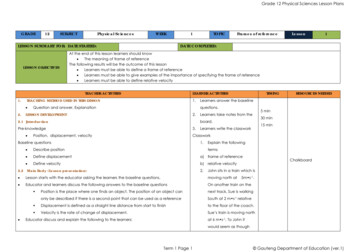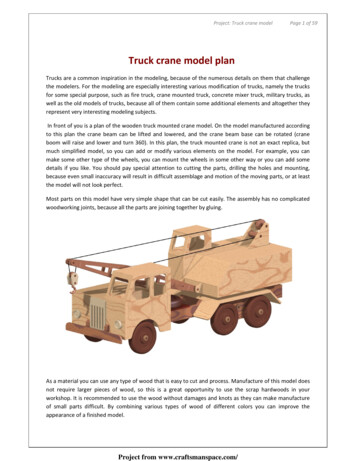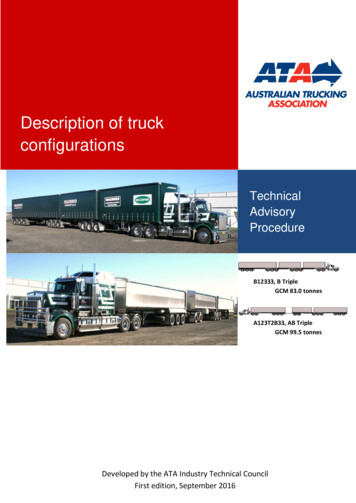
Transcription
Description of 3, B TripleGCM 83.0 tonnesA123T2B33, AB TripleGCM 99.5 tonnesDeveloped by the ATA Industry Technical CouncilFirst edition, September 2016
2016 Australian Trucking Association Ltd (first edition)This work is copyright. Apart from uses permitted under the Copyright Act 1968, no part may bereproduced by any process without prior written permission from the Australian TruckingAssociation. Requests and inquiries concerning reproduction rights should be addressed to theCommunications Manager, Australian Trucking Association, 25 National Circuit, Forrest ACT2603 or ata@truck.net.au.About this Technical Advisory Procedure (TAP):This Technical Advisory Procedure is published by the Australian Trucking AssociationLtd (ATA) to assist the road transport industry, authorities and the general public toaccurately identify truck configurations and to achieve a better understanding ofterminology.The Technical Advisory Procedure is a guide only, and its use is entirely voluntary.Operators must comply with the Australian Design Rules (ADRs), the Australian VehicleStandards Regulations, roadworthiness guidelines and any specific information andinstructions provided by manufacturers in relation to the vehicle systems andcomponents.No endorsement of products or services is made or intended.Suggestions or comments about this Technical Advisory Procedure are welcome. Pleasewrite to the Industry Technical Council, Australian Trucking Association, Minter EllisonBuilding, 25 National Circuit, Forrest ACT 2603.DISCLAIMERThe ATA makes no representations and provides no warranty that the information andrecommendations contained in this Technical Advisory Procedure are suitable for use by orapplicable to all operators, up to date, complete or without exception. Reliance or use upon theinformation or recommendations is voluntary and the user accepts all risks and responsibility forany such reliance or use and to the maximum extent permitted by law the ATA excludes allliability to any person arising directly or indirectly out of any such reliance or use.Description of truck configurations - first edition, September 2016Page 2 of 12
1IntroductionThis Technical Advisory Procedure (TAP) has been developed by the ATAIndustry Technical Council (ITC) to provide operators, authorities and the generalpublic with a simple chart of heavy vehicle configurations and their descriptions.The ATA ITC identified the need for this guide to provide clarity in describingcombinations during the process of preparing the second edition of the ATA ITCTruck Impact Chart TAP.2Understanding the coding used to identify a combinationDescriptions of truck configurations are often used, but can be too broad andoften add confusion. Under the Australian Design Rules; a motor vehicle must be supported by an axle or axle group towards boththe front and rear of the vehicle;a semi-trailer must be supported by an axle or axle group towards the rear;anda trailer, other than a semi-trailer, must be supported by either one axlegroup or alternatively, an axle or axle group towards both the front and therear of the trailer.The concept of "AnTnn" coding was developed on the basis that no vehicle canhave more (as described above) than two axles or axle groups where "n" is thenumber of axles in each axle group. Note that “n” cannot exceed 2 for steer axlesand 4 for non-steer axles.The coding used in these illustrations uses the following convention:R – rigid truckA – articulated truck comprising a prime mover and a semi-trailer coupledby a turntable or B-couplingT – trailer unit with conventional drawbar or converter dolly with drawbarB – trailers coupled via a turntable mounted on the forward trailern – refers to the number of axles in an axle groupNote:(nn) – brackets may be included to link axle groups together in thedescription of the more unusual trailers configurations where the two axlegroups of the a trailer cannot be separated, eg the forward axle group isnot part of a converter dolly.Dog trailer assembly usually consists of a semi-trailer with a converterdolly as the forward axle group. However, when used in a typical rigidtruck and single dog trailer combination, commonly used as tippers, theforward axle group is fixed to the trailer, while dollies as extensively usedwith multi-trailer combinations. Brackets may be used to link the axlegroups, on the trailer, as they cannot be separated eg R11T(11), but hasnot been used in the TAP.Description of truck configurations - first edition, September 2016Page 3 of 12
By way of example,R12refers to a 3 axle rigid truck – a single steer and a tandem axle groupA123 refers to a conventional 6 axle articulated vehicle with a single steeraxle, tandem drive and a 3 axle semi-trailer.B1233 refers to a conventional B-double with a 3 axle prime mover towingtwo 3 axle semi-trailers – an A or lead trailer and a B or second trailer.3Understanding the generic configuration descriptionThe following vehicle is commonly called a BAB quad.Firstly, it has four trailers and is thus a quad combination. A double refers to twotrailers, a triple has three trailers and a quin has five trailers within thecombination.The vehicle is made of 3 coupling segments (or elements) – BAB.B-type coupling element, A-type coupling element and another B-type couplingelement.A-type couplings are drawbar based couplings. It does not transfer roll or loadbetween vehicle elements. Typically, a converter dolly uses an A-type coupling.B-type couplings are fifth wheel or turntable couplings. It typically, does transfer rollbetween vehicle elements and will always transfer load between vehicle elements.BAB Quad Prime mover with a B-type coupling for the quad (four) trailerscomprising of a:B-double (2 trailers) set,A converter dolly andB-double (2 trailers) set.3Cover images, de-codedThe two images on the front cover reflect two other longer combinations.B12333, B Triple, GCM 83 tonnesThe truck drawing above is of an articulated unit with a single steer axle andtandem drive pulling three trailers in a B train configuration with two – three axleA or lead trailers and a single B type trailer or semi-trailer. All using a B typecoupling.Description of truck configurations - first edition, September 2016Page 4 of 12
A123T2B33, AB Triple, GCM 99.5 tonnesThe truck drawing above is an articulated unit with a single steer axle and tandemdrive pulling a semi-trailer set with an additional B double trailer set. It is coupledvia a converter dolly with an A type coupling to a B type coupling of the B-double.5Gross Vehicle Mass (GVM) / Gross Combination Mass (GCM)The GVM / GCM figures listed in the truck configuration tables (section 8 of thisTAP) are based on the axle limits published in the National Heavy VehicleRegulators General Mass Limits (GML) bulletin, of which only a sub set of thelimits are listed below in Table 1 below.Axle loading limits1.(tonnes)Typical limitSingle steer axle6.5 2Twin steering axles11.0with load sharing suspension 3Single axle 49.0Dual axle group 416.5Tri axle group 420.04Quad axle group20.05Table 1: Axle Loadings for GMLIf the axle(s) is usedwithin apig trailer8.515.018.0Not availableTable notes1. The tabulated figures do not take into account any other limitation, whichmay impact on the combination’s GVM or GCM.2. 6.0 tonnes is the typical steer axle mass limit under NHVL, but a 6.5tonnes limit is available to units with an engine complying with ADR80/01(Euro IV emissions), ADR84/00 front underrun protection device and thecab strength requirements of UN ECE R29. 6.5 tonnes has been used inthe section 8 table.3. Non-load sharing suspensions are limited to 10.0 tonnes and have notincluded.4. All axles are assumed to have 4 tyres except for the steer axle(s).5. The load limit for a quad axle group is currently under review. Theycurrently have a limit of 20 tonnes GML and limit up to 27 tonnes whenoperating under HML within in a PBS combination.Description of truck configurations - first edition, September 2016Page 5 of 12
Certain configurations are legally limited to less than the sum of their axlegroups. Under Heavy Vehicle National Law (HVNL) for GML, all trucks with asingle trailer are limited to 43.0 tonnes GCM including the additional halftonne is available for a complying steer axle. See note 2 above. Rigid trucks towing dog or pig trailers are limited in that the mass of trailershall not exceed the mass of the truck towing it. 7 axle (pocket, 19 m OAL) B-double is limited to a GCM of 50.5 tonnes(general access) or 56.0 tonnes (restricted access) including the halftonne for a complying steer axle. All combinations are still required to comply with minimum axle spacingnecessary for the load being carried.6Definition of GVM and GCM used in this TAPThe GVMs or GCMs of a configuration is the sum of the individual axles and axlegroups at the individual GML axle load limits as defined in Table 1 above.7Notes and key for the description of truck configuration descriptionused in section 8 tableNotes Modular truck combinations are designed that when they are brokendown, each trailer or trailers will also form a legal combination for the nextsection of the trip. The table (section 8 of this TAP) is a general reference, being illustrative,and is not envisaged to be all encompassing of truck configurations drivenon the road.The truck may have 2, 3, 4 or 5 axles or more, in a range of axleconfigurations in either a rigid or prime mover format, dog trailers havebeen produced with between 2 and 6 axles, semi-trailers (both A or leadand B types) have been produced with between 1 and 4 axles, pig trailershave been produced with between 1 and 3 axles and dollies with between2 and 4 axles.Table key for section 8 of this TAP below:‘*GCM is limited to less than the sum of the axles and this may varybetween the states and territories. Heavy Vehicle National Law (NHVL) limits the GCM of a truck and singletrailer to 43.0 tonnes with a complying steer axle.@These configurations include at least one quad axle group. The GCMnoted is based on 27 tonnes for the quad group, which is only available forHML as a PBS model with restricted access.Description of truck configurations - first edition, September 2016Page 6 of 12
8Description of truck configurationsGVM / GCM(tonnes)Potentially amodularcombinationR1115.5NA3-axle rigidR1223.0NA4-axle rigidR2227.5NARigid truck and pig trailer combinations (pig trailers have one axle or axle group in the centre of the trailer)CodingGVM / GCM(tonnes)Potentially amodularcombination2-axle rigid, 1-axle pigR11T124.0NA2-axle rigid, 2-axle pigR11T230.5NA3-axle rigid, 2-axle pigR12T238.0NA3-axle rigid, 3-axle pigR12T341.0NA4-axle rigid, 3-axle pigR22T345.5(42.5)* NARigid TrucksCoding2-axle rigidGVM / GCM(tonnes)Potentially amodularcombinationRigid truck and dog trailer combinations (dog trailers have an axle or axle group at each end of the trailer)Dog trailer assembly usually consists of a semi-trailer with a converter dolly as the forward axle group. However, typicalof the following combinations, commonly refer to a rigid truck and dog, the forward axle group is fixed to the trailer.Coding2-axle rigid, 2-axle dogR11T1133.5(31.0)*NA3-axle rigid, 2-axle dogR12T1141.0NA3-axle rigid, 3-axle dogR12T123-axle rigid, 4-axle dogR12T22Description of truck configurations - first edition, September 201648.5(43.0)* 56.0(43.0)* NANAPage 7 of 12
3-axle rigid, 5-axle dogR12T233-axle rigid, 6-axle dogR12T334-axle rigid, 3-axle dogR22T124-axle rigid, 4-axle dogR22T22Single articulated vehicles (prime mover coupled to a single semi-trailer)Coding3-axle semi, single drive,single axle4-axle semi, single drive,tandem axle5-axle semi, single drive, triaxle5-axle semi, tandem drive,tandem axle6-axle semi, tandem drive, triaxle7-axle semi, tandem drive,quad-axle7-axle semi, tri-drive, tri-axleB-Doubles (Prime mover coupled to 2 semi-trailers, connected via a B coupling)Trailers are sometimes described as an A or lead trailer with a following B or semi-trailer.B-double, tandem drive,tandem axleB-double, tandem drive,tandem-tri axleB-double, tandem drive, tritandem axleDescription of truck configurations - first edition, September 201659.5(43.0)* 63.0(43.0)* 53.0(43.0)* 60.5(43.0)* NANANANAGVM / GCM(tonnes)Potentially 12239.5NAA12343.0NAA124A133Coding43.0* (50.0 @)46.5(43.0)* GVM / GCM(tonnes)NANAPotentially 259.5MPage 8 of 12
B-double, tandem drive, triaxleB-double, tandem drive, quadtri-axleB-double, tandem drive, quadaxleB1233B1243B124463.063.0(70.0 @)63.0(77.0 @)MM-CodingGVM / GCM(tonnes)Potentially amodularcombinationB1222272.5MB1233279.5MB-triple, tandem drive, tri-axleB1233383.0MConventional double road train, type I road train or A double. (prime mover coupled firstly to a semi-trailer and thena dog trailer connected via an A coupling and comprising of a converter dolly and semi-trailer)CodingGVM / GCM(tonnes)Potentially amodularcombinationA123T2379.5MA123T3383.0MGVM / GCM(tonnes)Potentially amodularcombinationB-Triples (Prime mover coupled to 3 semi-trailers, connected via a B coupling)The trailers are 2 A or lead trailers with a following B or semi-trailer)B-triple, tandem drive, 3tandem axle groupsB-triple, tandem drive, tri-tritandem axleDouble road-train, tandemdrive, tri-axle, tandem dollyDouble road-train, tandemdrive, tri-axle, tri-dollyConventional triple road train, type II road train or A triple. (prime mover coupled firstly to a semi-trailer and then2 dog trailers connected via an A coupling, and both comprising of a converter dolly and semi-trailer)CodingTriple road-train, tandem drive,tri-axle, tandem dollyA123T23T23116.0MTriple road-train, tandem drive,tri-axle, tri-dollyA123T33T33123.0-Description of truck configurations - first edition, September 2016Page 9 of 12
Modern road trains, a variation of the tradition type I and II road trains.They are modular and include both A and B type coupling(s) of the semi-trailer elements.AB-triple, tandem drive, triaxle, tandem dollyAB-triple, tandem drive, triaxle, tri-axle dollyAB-triple, tandem drive, triquad-tri, tri-axle dollyAB-triple, tri-drive, tri-axle,tandem dollyAB-triple, tri-drive, tri-quad-tri,tri-axle dollyBAB-quad, tandem drive, triaxle, tandem dollyBAB-quad, tandem drive, triaxle, tri-dollyBAB-quad, tandem drive,quad-tri, tri-dollyBAB-quad, tri-drive, tri-axle,tandem-dollyDescription of truck configurations - first edition, September 2016GVM / GCM(tonnes)Potentially 24T3B43103.0(117.0 @)-A133T2B33103.0-A133T3B43106.5(113.5 -B1333T2B33143.0MCodingPage 10 of 12
TAP development process, history and validationThe processThe ITC will approve the need for the creation of a new TAP or the triennialroutine review of an existing TAP. The nominated editor(s), who are listed below,with support of the ITC and specialist industry technical members as required,will agree on the TAP content with approval by a majority vote of ITC members.A suitably qualified and experience ATA appointed peer reviewer will furtherreview the publication and if necessary, recommend changes. These changeswill then be reviewed and approved again by a majority vote of ITC membersbefore the document is released.Document version controlEdition DateNature of change / commentEditor(s)FirstInitial releaseChris Loose, ATASenior Adviser EngineeringSeptember2016The next review is expected on or before September 2020.Drafting committeeEdition DateDraftingOrganisation / QualificationsFirstFirstBob WoodwardChris LooseBarkwood Consulting, BEngAustralian Trucking Association, BEngEdition DatePeer ReviewerOrganisation / QualificationsFirstBob PearsonPearsons Transport Resource Centre, BEngSeptember2016Peer reviewSeptember2016Description of truck configurations - first edition, September 2016Page 11 of 12
About the ATA Industry Technical Council:The Industry Technical Council (ITC) is a standing committee of the AustralianTrucking Association (ATA). The ITC’s mission is to improve trucking equipment,its maintenance and maintenance management. The ITC was established in1995.As a group, the ITC provides the ATA with robust professional advice ontechnical matters to help underpin the ATA’s evidence based policymaking. It isconcerned with lifting technical and maintenance standards, improving theoperational safety of the heavy vehicle sector, and the development of guidelinesand standards for technical matters.ITC performs a unique service in the Australian trucking industry by bringingoperators, suppliers, engineers and other specialists together in a long-termdiscussion forum. Its members provide expert and independent advice in the fieldto inform the work of the ITC. The outcomes from ITC benefit all ITCstakeholders and the heavy vehicle industry at large.The ITC operates under the Australian Trucking Association’s Council, whichformulates industry policy for implementation by the organisation.Joining ITC:We welcome applications to join the ITC. For further information,please call the ATA (02) 6253 6900emailata@truck.net.auor download information from the ATA website www.truck.net.au follow the linksunder the members tab to join here.Identification of truck configurations - first edition, September 2016Page 12 of 12
Description of truck configurations - first edition, September 2016 Page 5 of 12 The truck drawing above is an articulated unit with a single steer axle and tandem drive pulling a semi-trailer set with an additional B double trailer set. It is coupled via a converter dolly with an A type coupling to a B type coupling of the B-double.
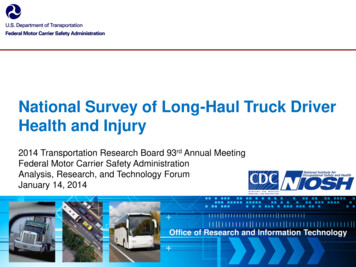
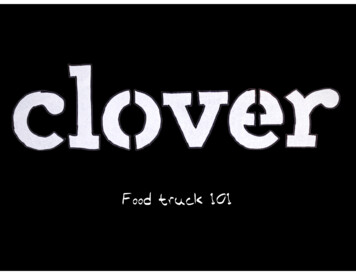


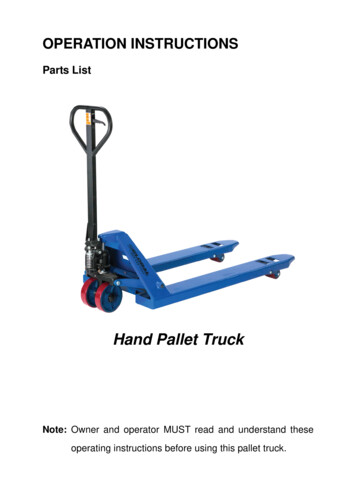
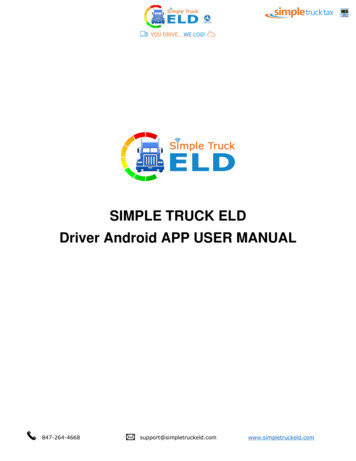
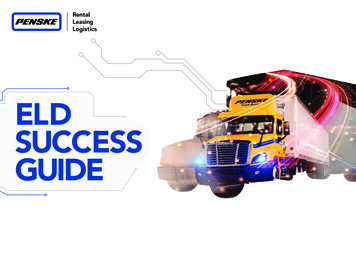
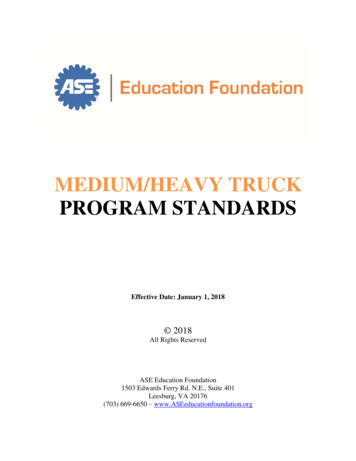
![Bosch ESI[truck] Heavy Duty Truck Software Update – Q2 .](/img/22/bosch-esitruck-heavy-duty-truck-release-notes-details-2019-2-0-0-0.jpg)
